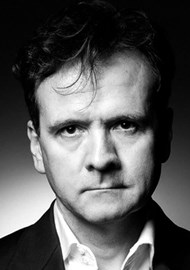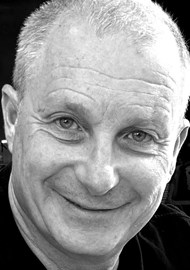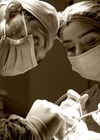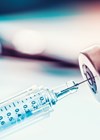The post-truth phenomenon has become a worldwide problem. The absence of a research integrity watchdog in Australia is causing related concern in aesthetic surgery, with the risk of research misconduct being allowed to prosper and benefit vested commercial interests. We will show how findings based on false evidence have been amplified by vested interest groups in social media and allowed to remain in the medical literature with potential to have influenced regulatory decisions and associated clinical care of patients worldwide.
“Distortion, fakery and partisan reporting” encompass the post-truth phenomenon of something untrue being believed through repetition and social media [1]. Such conduct might be expected in politics – to appreciate that danger, one only has to consider the 2016 US Presidential election, the UK Brexit referendum [2] and the recent ‘Voice’ referendum in Australia, about changing the constitution to recognise its First Peoples [3]. An observer to the latter presciently remarked, “Of the many lessons […] there is one which must be more urgently addressed […] our appetite for mistruths […] we all risk a dear price should we march on as we are, sleepwalking towards a future in which nothing at all can be trusted” [2].
Whilst politics is an obvious post-truth concern, another is peer-reviewed clinical research. Scientific integrity matters – decisions about lives and bodies depend upon it. Yet recently we have seen increasing scientific fraud, plagiarism and research misconduct [4,5].

Italian surgeon Paolo Macchiarini sought to replace tracheae using tissue engineering techniques. He “overstated his results and even lied about them” [6]. Numerous patients died. Whilst his Swedish employer found him guilty of scientific research misconduct and called for several articles to be retracted, he was not exposed internationally where he had also practised. Commentators remarked, “Like any big organisations, universities and hospitals are jealous of their reputations and, for that reason, prone to hide their dirty laundry” [7]. Macchiarini's troubling legacy was also crystallised as “the unwillingness of scientific journals to retract seriously flawed data that means the findings and conclusions cannot be relied on” [6].
Australia is not immune. According to the Retraction Watch database, more than 650 academic papers with Australian authors have been retracted in the past 20 years, with 37% having occurred in the past four years [5,8]. However, the process of investigation in Australia means that research misconduct, even when identified, may not be held to account, with highly questionable research findings remaining in print. This is because, in whatever jurisdiction it occurs, it is the scope and conduct of research misconduct inquiries that are fundamental to its identification and correction.
Initial inquiries in Australia are not independent and therefore may be subject to conflicts of interest. A focus on ‘governance and regulatory approval’ [7] – meaning the process rather than merits of the evidence – can also be dangerous. Australia does both.
This matters. Published Australian medical research is relied on by practitioners worldwide. ‘Bogus breakthroughs’ are costly, clinically and financially, and unless the record is corrected, damage continues with more patients harmed [7].
The Australia Institute – an independent Canberra think tank - put it succinctly:
Australia is one of the few countries with a developed research sector that doesn't have a research integrity watchdog […] the UK, US, Japan, China, Canada and 23 European countries have one, but in Australia, we rely on institutions to initiate and oversee investigations into their own researchers […] We can’t continue to let research institutions investigate themselves and sweep matters of research integrity under the rug just so they can protect their reputations and funding […] Australia needs an independent, government funded national regulator to protect our rights and health and maintain our global reputation for trustworthy research [9–12].
The Australian Research Integrity Committee (ARIC), set up in 2011 to review institutional processes, manages and investigates potential breaches of The Australian Code for the Responsible Conduct of Research 2018 (the Code) [13]. However, ARIC review is limited in scope to investigating only the processes of an institution’s investigation of alleged Code breaches and provides non-binding recommendations. Put another way, an institution investigating its own researchers with its unavoidable baked-on conflicts of interest can delay, obfuscate and ultimately exonerate research misconduct by making findings contrary to the evidence. If process has been followed, ARIC can do nothing. Hence the pressing need for an independent research integrity watchdog.
In such context, what is the relevance for aesthetic surgery? As in many other countries, Australian plastic surgeons compete with other practitioners of cosmetic surgery. In a $1.5–2bn industry, all vie for commercial supremacy. That a motivation exists for bogus science, partisan reporting and perhaps even reverse-engineering a desired research outcome which may confer a commercial advantage, cannot be denied.
Breast augmentation surgery, the most common aesthetic surgical procedure for women [14], is one of the most lucrative sectors of cosmetic practice, with Australian surgeons typically charging patients many thousands of dollars. Into that arena has emerged publicity around Breast Implant Associated Anaplastic Large Cell Lymphoma (BIA-ALCL), first reported in 1997 [15] but unclassified by the World Health Organization until 2016 [16].
Also in 2016, Associate Professor Mark Magnusson, an Australian plastic surgeon, was a member of a surgical research group led by Macquarie University that had advanced the theory that BIA-ALCL was caused by bacterial contamination [17]. Other researchers were unable to confirm the group’s findings and Dr Eric Swanson, a US plastic surgeon, recently stated, “Today, biofilm, Ralstonia, and bacterial contamination have been largely abandoned as plausible aetiologies for BIA-ALCL” [18–22], followed by “Gram-negative bacteria, including Ralstonia pickettii, and the discredited 14-point plan are now believed to be irrelevant to the aetiology” [19,21–25].
However, in October 2016 in those early days of disease publicity, Prof Magnusson as the then new President of the craft group, the Australasian Society of Aesthetic Plastic Surgeons (ASAPS), presented on BIA-ALCL at its annual meeting, detailing how the ASAPS was already using the disease. He said, “We have engaged the regulators. We want to also use this [BIA-ALCL] to try and legislate to make accreditation of the facilities where this surgery is undertaken a requirement. We want to try to see how far we can push the requirement for the accreditation of the surgeon” [26]. In context of the early and uncertain nature of the Macquarie groups’ research theory, the motivation for such a precipitous rush to engage the regulators with the effect of removing competitors is open to question.
This attempt having failed to ‘push’ Australian regulators to deliver reduced competition, in 2019 the Macquarie group published data alleging that the ‘certification’ status of the practitioner performing a breast augmentation could affect patients’ risk of developing this disease [27]. The apparent implication was that poor surgical technique, perhaps as a consequence of training different from their own, could generate bacterial contamination [18,28,29].
Despite this narrative, attempts to ascribe such causative blame were heavily criticised internationally. This included on the bases of “falsified data and ethical lapses,” “misinformation currently being circulated on BIA-ALCL” and lack of any “credible data support” linking the disease either to “technical deficiency” or “surgical technique,” with such reports considered to represent a “dangerous association” [18–20,30–34]. Swanson also offered scrutiny, often elegantly dismantling publications in a series of editorials covering dishonesty and conflict of interests [19,35,36].
Amongst Swanson’s 2023 editorials, he was critical of lead author Professor Anand Deva, an Australian plastic surgeon and head of the Macquarie group. Swanson spoke to the medico-politicisation of BIA-ALCL, commenting, “Plastic surgeons must be careful not to use BIA-ALCL as a weapon against their competitors or add regulations that are irrelevant to the risk of this disease” [18].
Swanson then focussed on the Macquarie group’s 2019 paper that had purported to provide the evidence which in 2016 may have caused Magnusson to have “engaged the regulators” in apparent attempt to restrict which doctors could perform breast augmentation. That paper “reported a higher frequency of BIA-ALCL cases for surgeons who are not certified as specialist surgeons.” Swanson commented, “This is an important finding and one that merits scrutiny,” before detailing a litany of scientific and statistical analytical flaws in the publication [18].
Swanson was perhaps unaware that the day after the paper’s late 2019 online publication, ASAPS promoted on its social media channel greater responsibility for BIA-ALCL to ‘non-certified’ surgeons, consistent with the authors’ unproven theories [28,30,37,38] and lauded the publication as “insightful research” [39]. However, writing about the group’s data interpretation, Professor Suzanna Turner, British Biologist, commented, “This is perhaps a dangerous precedent to set as it could lead women to believe that they are safe and protected from BIA-ALCL when employing a certified surgeon, a fact that is clearly not true” [40].
In context of this ‘insightful research,’ which had clearly caused concern and as described below has been shown to have been based on false data, ASAPS then commenced a campaign, including by social media, regarding accreditation of medical practitioners performing cosmetic surgery [41,42]. The post-truth era for aesthetic surgery research in Australia had arrived, by apparent coincidence just in time to be in the mix of a period of intense scrutiny of the cosmetic surgery industry and consequential regulatory change in 2023 [43–46].
In reference to the Macquarie group’s 2019 paper, Swanson wryly observed “The causal relationship between the device and the disease is the basis for the actions of regulatory bodies all over the globe that have found fault where it lies, squarely with the implant and not with the doctor or patient”, concluding, “There is no need for a witch hunt” [18].
Swanson did not know that at the time of his writing he was not the first to have had serious concerns about the paper. Following similar analysis, the Board of the Australasian College of Cosmetic Surgery and Medicine made a research misconduct complaint to each of the authors’ five institutions – Macquarie University, Griffith University, Monash University, Sydney University and the Peter MacCallum Cancer Centre [47]. It ran to 37 pages with an appendix of supporting evidence of 877 pages, later supplemented even further. How this complaint was assessed and its outcome highlight the dangers identified by The Australia Institute and show what can happen in the absence of an independent research integrity watchdog.
Macquarie University, the employer of the lead author, became the investigative lead institution and acted according to its own Research Code Procedure [48], adapted from the Australian ‘Code’ [13]. Key amongst seven research misconduct allegations were:
- The authors claimed that they had obtained eight years of sales data from 2008–2015 for one of the implant types critical to their calculations of the differential risk between practitioner type. This was not true. In fact, they had obtained and used only nine months of sales data for a single year, 2015.
- The authors failure to disclose the very small sample size on which statistical claims had been based, instead only stating proportions in the form of percentages.
The latter departure from accepted research practice was the very same concern later independently criticised by Swanson [18]. The authors’ claim of statistical significance for the sensational, unprecedented finding that patients of one group of doctors – what they called ‘noncertified practitioners’ – were more likely to get cancer than their own group, was meaningless without disclosure of the sample size used to compare the two groups. To our knowledge, never before had it been suggested that the certification status of one type of surgeon compared to another – notably not of the authors’ own group – could cause patients to have a higher risk of developing cancer. Rigorous data and large comparative sample sizes would be expected to support such a claim.
In fact, only 104 total cases of BIA-ALCL in Australia were reported. After then reducing the numbers of patients for analysis to 95 and excluding seven patients who had mastopexy at the time of their augmentation (notably, all of whom were reported to have had their surgery by a ‘certified’ practitioner), the authors claimed there were 67 “cosmetic augmentations”. These were further culled, until a much smaller group remained, which perhaps suited the authors’ better.
Following analysis, the complaint detailed that the total n number for cases (not practitioners) used in the comparative calculations for practitioners is likely in the range 21–32. These cases were distributed across both certified and noncertified practitioners. Because of multiple cases amongst very high-volume surgeons, the number of surgeons compared was even smaller, likely in the single figure range for the ‘noncertified’ practitioners. The scientific implications of such small sample sizes are obvious in the context of the gravity of the authors’ associated claim. Interestingly, a pre-publication copy of the paper was provided by an unknown source to the Sydney Morning Herald, one of Australia’s largest circulation newspapers. Predictably, the newspaper immediately focussed and sought comment on the apparent extra risk of developing cancer for patients of ‘noncertified’ practitioners.
Macquarie University’s internal preliminary inquiry took 10 months before it advised “the matter can be resolved locally with corrective action” and therefore there was no need for a full investigation. It passed off the misrepresentation of nine-months’ sales data as eight years of data, prior to its use as the denominator for calculating the risk of BIA-ALCL for the patients of specific groups of doctors, as an “oversight”. Macquarie merely concluded the relevant timeframe “may not have been adequately detailed in the Paper”. It made no comment whatsoever about the failure of these experienced researchers to disclose the sample size on which their findings were based. It seemed the evidence provided to Macquarie had either not been understood or ignored.
Macquarie did not deem such fundamental matters as research misconduct, despite its common definition as “A serious breach of the Code which is also intentional or reckless or negligent” [13,48]. The misrepresentation and omission were serious because the findings relied on them. That they must have been either intentional or reckless or negligent as opposed to an oversight seems unarguable, yet they were simply whitewashed. Request for review by the Chair of the Macquarie Academic Senate was refused. Once again, formal appeal could only be made on procedural grounds to ARIC but merit or evidence, or the ignoring of evidence, could not be considered.
Such events illustrate precisely the concern identified by the Australia Institute, that appealing the outcome of an investigation in Australia is in effect “near impossible” [10,11]. It reported this approach as raising major concerns regarding conflicts of interest, inadequate penalties, lack of transparency and flawed appeals processes in Australia [10].
Macquarie did not make any findings public and merely recommended the authors request publication of a corrigendum. That narrow publication, two-and-a-half years after the original paper, is quoted in full here:In the originally published manuscript “Breast Implant–Associated Anaplastic Large Cell Lymphoma in Australia: A Longitudinal Study of Implant and Other Related Risk Factors” by Anna Loch-Wilkinson, Kenneth J. Beath, Mark R. Magnusson, et al, in Aesthet Surg J. 2020;(40)8:838–846. https://doi.org/10.1093/asj/sjz333, the authors would like to further clarify the source of data for Table 7. The percentage split between sales to certified vs non-certified practitioners for Silimed, Inc. (Rio de Janeiro, Brazil) breast implants was obtained from the implant distributor and covered the 12 months of highest sales of this device. The authors reiterate, as they did in the original publication, that these findings are preliminary and require further study to investigate the impact of certification, training, and licensing on the outcomes of cosmetic breast augmentation procedures, including the risk of breast implant–associated anaplastic large cell lymphoma (BIA-ALCL). The authors appreciate the opportunity to clarify this data and regret any prior oversights. https://doi.org/10.1093/asj/sjac033 [49]
Anyone reading this corrigendum would not appreciate that what “the authors would like to further clarify” was that the nine months of a single year of breast implant sales data obtained for 2015 had been instead misrepresented as an eight-year period from 2008–2015 and used to calculate the relative risks. Astonishingly, the corrigendum itself makes the further false claim that the data was for twelve-months, when it was only for nine-months. Once again, no disclosure was made of the sample size on which the conclusions and their alleged statistical significance were based.
So, what to make of all this and why does it matter?
In a rational world where neither fact is considered fiction, nor fiction considered fact, such an approach to scientific research is deeply troubling. Accurate, reliable science is blind, apolitical and reproducible. In contrast, post-truth, bogus science, perhaps motivated by commercial or other surrogate purpose and then publicised across social media, brings Professor Sir Peter Medawar’s “citizens of the intellectual underworld” to mind [50]. No one is served well – certainly not women or regulators charged with their protection.
Publications by the Macquarie group have been in pre-eminent international journals and are some of the most referenced in the BIA-ALCL literature. The group’s leader, Prof Deva, has been a very regular BIA-ALCL speaker at international conferences. The Macquarie group’s publications have been relied upon by the Australian Government Department of Health’s Therapeutic Goods Administration (TGA) in making regulatory decisions affecting patients, including in relation to banning polyurethane foam-covered silicone implants (PU), one brand of which has the lowest number of cases of BIA-ALCL of all known textured implant types [51–53]. No other country apart from France has taken such a step [52,54–56]. Regulators seem to have been influenced and surgeons may have relied on the Macquarie research when explaining BIA-ALCL to patients. Yet because of these apparently local Australian deficiencies it is not widely known that the group misrepresented data and failed to disclose critical information when publishing on BIA-ALCL.
The effects in Australia have been profound. For example, since the TGA’s 2019 action, women have been denied the benefit of five decades’ clinical experience of PU implants which offer the greatest protection against the commonest problems any woman with breast implants will face – capsular contracture and displacement [57–61].
The Macquarie research group’s published 2019 paper – with its misrepresentation of data and undisclosed sample size – bearing the extraordinary message that surgeons ‘noncertified’ by a particular vested interest group were somehow more likely to cause cancer in women undergoing breast augmentation – effectively stands unchallenged and continues to be referenced [18,29].
The group has recently turned its attention to Breast Implant Illness (BII) [62–64]. When advertising to enrol patients in its study, it tells them that BII is a recognised condition, when thus far it is not [65,66]. This has the potential to bias the results before the study has even begun by the recruitment of patients who have been led to believe a recognised condition is the cause of their symptoms. Whether the data in any future publications can be relied upon and how any findings may influence future TGA decisions affecting women with breast implants is a concern. Perhaps some members of the group have learnt from their previous research conduct. Otherwise commencing their first publication on BII echoing Brody’s warning that “we must not succumb to pseudo-science or jump to unsupported conclusions” may represent another step on the post-truth path [62].
We agree with the Australia Institute’s call for an independent research integrity watchdog [9–12]. Would it have upheld Macquarie’s response to the research misconduct complaint and the content of the subsequent corrigendum? As a Macchiarini commentator presciently remarked, “Self-interest makes the argument for a national independent office of research integrity where one doesn’t exist” [6].
It is time Australia had one.
References
1. Datar R. Did Post-Truth Overshadow US Election Coverage? BBC Sounds [podcast] (January 2017).
https://www.bbc.co.uk/
sounds/play/p04nmy2k
2. Besser L. The Voice campaign was infected with disinformation. Who's in charge of inoculating Australians against lies? (2023). ABC News.
https://www.abc.net.au/news/2023-10-17/
voice-referendum-infected-disinformation
-australians-lies/102981108?utm_campaign=abc
_news_web&utm_content=link&utm_medium=
content_shared&utm_source=abc_news_web
[Link last accessed October 2023].
3. Referendum on an Aboriginal and Torres Strait Islander Voice (2023). Australian Government National Indigenous Australians Agency.
https://www.niaa.gov.au/indigenous
-affairs/referendum-aboriginal-and
-torres-strait-islander-voice
[Link last accessed February 2024].
4. Matza M. Claudine Gay resigns as Harvard University president (2024). BBC News.
https://www.bbc.com/news/
world-us-canada-67868280
[Link last accessed January 2024].
5. Psychology professor earns retractions after publishing with ‘repeat offenders’ (2023). Retraction Watch.
https://retractionwatch.com/category/
by-country/australia-retractions/
[Link last accessed February 2024].
6. Abbasi K. Retract or be damned: a dangerous moment for science and the public. BMJ 2023;381:1424.
7. Rasko JEJ, Power C. The deadly legacy of a stem cell charlatan. BMJ 2023;381:1367.
8. Ryan J. UNSW to be investigated over 'preliminary' research misconduct inquiry that has taken two years (2023). ABC News.
https://www.abc.net.au/news/science/2023-12-11/
unsw-research-integrity-allegations-aric/103099286?
utm_campaign=abc_news_web&utm_content=link&utm
_medium=content_shared&utm_source=abc_news_web
[Link last accessed December 2023].
9. @TheAusInstitute. ‘Australia is one of the few countries with a developed […]’ [Twitter / X Post] (2:35 AM 13 November 2023).
https://twitter.com/TheAusInstitute/status/
1723892240953885095
[Link last accessed February 2024].
10. Scicluna K, Denniss R. Research Misconduct in Australia. Part 1: The case for an independent research integrity watchdog (2023). The Australia Institute.
https://australiainstitute.org.au/wp-content/
uploads/2023/11/P1393-Research-misconduct
-in-Australia-Part-1-The-case-for-an-independent
-research-integrity-watchdog-in-Australia.pdf
[Link last accessed February 2024].
11. Scicluna K. Research Misconduct in Australia. Part 2: Recommendations for Creating a World-leading Research Integrity Watchdog with Teeth (2023). The Australia Institute.
https://australiainstitute.org.au/
report/research-misconduct-in-australia
-part-2-recommendations-for-creating-a-world
-leading-research-integrity-watchdog-with-teeth/
[Link last accessed February 2024].
12. Independent watchdog essential to combat research misconduct (2023). The Australia Institute.
https://australiainstitute.org.au/post/
independent-watchdog-essential-to
-combat-research-misconduct/
[Link last accessed November 2023].
13. Australian Code for the responsible Conduct of Research 2018 (2018). National Health and Medical Research Council.
https://www.nhmrc.gov.au/about-us
/publications/australian-code
-responsible-conduct-research-2018
[Link last accessed January 2024].
14. ISAPS Global Survey 2022 (2022). International Society of Aesthetic Plastic Surgery.
https://www.isaps.org/discover/about-isaps/
global-statistics/reports-and-press-releases/global
-survey-2022-full-report-and-press-releases/
[Link last accessed October 2023].
15. Keech JA Jr, Creech BJ. Anaplastic T-cell lymphoma in proximity to a saline-filled breast implant. Plast Reconstr Surg 1997;100(2):554–5.
16. Swerdlow SH, Campo E, Pileri SA, et al. The 2016 revision of the World Health Organization classification of lymphoid neoplasms. Blood 2016;127(20):2375–90.
17. Hu H, Johani K, Almatroudi A, et al. Bacterial Biofilm Infection Detected in Breast Implant-Associated Anaplastic Large-Cell Lymphoma. Plast Reconstr Surg 2016;137(6):1659–69.
18. Swanson E. Breast Implant-Associated Anaplastic Large-Cell Lymphoma: Finding Fault Comes Full Circle. Ann Plast Surg 2023;91(6):634–7.
19. Swanson E. Concerns Regarding Dishonesty in Reporting a Large Study of Patients Treated With Allergan Biocell Breast Implants. Ann Plast Surg 2022;88(6):585–8.
20. Kolasinski J, Sorotos M, Firmani G, et al. BIA-ALCL Epidemiology in an Aesthetic Breast Surgery Cohort of 1501 Patients. Aesthet Surg J 2023;43(11):1258–68.
21. Clemens M. Beyond BIA-ALCL: global update on breast implant associated malignancies (2023). IMCAS Academy.
https://www.imcas.com/en/academy/
show/14093/beyond-bia-alcl-global-update
-on-breast-implant-associated-malignancies
[Link last accessed November 2023].
22. Santanelli di Pompeo F, Clemens MW, Atlan M, et al. 2022 Practice Recommendation Updates From the World Consensus Conference on BIA-ALCL. Aesthet Surg J 2022;42(11):1262–78.
23. Swanson E. Textured Implant-Associated Anaplastic Large-Cell Lymphoma: Updating the Name. Ann Plast Surg 2023;91:321–3.
24. Fracol ME, Rodriguez MM, Clemens MW. A Spectrum of Disease. Breast Implant-Associated Anaplastic Large Cell Lymphoma, Atypicals, and Other Implant Associations. Clin Plastic Surg 2023;50(2):249–57.
25. Deva AK, Adams WP Jr, Vickery K. The role of bacterial biofilms in device-associated infection. Plast Reconstr Surg 2013;132(5):1319–28.
26. Magnusson M. ALCL 2016 Update – The ANZ experience and current treatment guidelines. 39th Australasian Society of Aesthetic Plastic Surgeons’ Conference; 6–9 October 2016; Marriott Gold Coast, Australia.
27. Loch-Wilkinson A, Beath KJ, Magnusson MR, et al. Breast Implant-Associated Anaplastic Large Cell Lymphoma in Australia: A Longitudinal Study of Implant and Other Related Risk Factors. Aesthet Surg J 2020;40(8):838–46.
28. Magnusson M, Beath K, Cooter R, et al. The Epidemiology of Breast Implant-Associated Anaplastic Large Cell Lymphoma in Australia and New Zealand Confirms the Highest Risk for Grade 4 Surface Breast Implants. Plast Reconstr Surg 2019;143(5):1285–92.
29. Deva AK. Commentary on: BIA-ALCL Epidemiology in an Aesthetic Breast Surgery Cohort of 1501 Patients. Aesthet Surg J 2023;43(11):1269–72.
30. Adams WP Jr, Culbertson EJ, Deva AK, et al. Macrotextured Breast Implants with Defined Steps to Minimize Bacterial Contamination around the Device: Experience in 42,000 Implants. Plast Reconstr Surg 2017;140(3):427–31.
31. Swanson E. A 1-Point Plan to Eliminate Breast Implant-Associated Anaplastic Large-Cell Lymphoma. Ann Plast Surg 2018;80(5):465–6.
32. DeCoster RC, Lynch EB, Bonaroti AR, et al. Breast Implant-Associated Anaplastic Large Cell Lymphoma: Defining Future Research Priorities. Clin Plastic Surg 2021;48(1):33–43.
33. Santanelli di Pompeo F, Clemens MW, Atlan M, et al. Response to: What Is Missing From the 2022 Practice Recommendation Updates From the World Consensus Conference on BIA-ALCL? Aesthet Surg J 2023;43(2):NP138–40.
34. Lynch EB, DeCoster RC, Vyas KS, et al. Current risk of breast implant-associated anaplastic large cell lymphoma: a systematic review of epidemiological studies. Ann Breast Surg 2021;5:30.
35. Swanson E, Brown T. A Discussion of Conflicts of Interest in Plastic Surgery and Possible Remedies. Plast Reconstr Surg Glob Open 2018;6(12):e2043.
36. Swanson E. Textured Breast Implants, Anaplastic Large-Cell Lymphoma, and Conflict of Interest. Plast Reconstr Surg 2017;139(2):558e–9e.
37. Loch-Wilkinson A, Beath KJ, Knight RJW, et al. Breast Implant-Associated Anaplastic Large Cell Lymphoma in Australia and New Zealand: High-Surface-Area Textured Implants Are Associated with Increased Risk. Plast Reconstr Surg. 2017;140(4):645–54.
38. Jones P, Mempin M, Hu H, et al. The Functional Influence of Breast Implant Outer Shell Morphology on Bacterial Attachment and Growth. Plast Reconstr Surg 2018;142(4):837–49.
39. @Australasian Society of Aesthetic Plastic Surgeons – ASAPS. ‘The latest paper on BIA-ALCL was published yesterday in the Aesthetic Surgery Journal […]’ [Facebook post] (20 November 2023)
https://www.facebook.com/profile/
100063760911449/search/?q=bia-alcl
[Link last accessed November 2019]
40. Turner SD. Commentary on: Breast Implant-Associated Anaplastic Large Cell Lymphoma in Australia: A Longitudinal Study of Implant and Other Related Risk Factors. Aesthet Surg J 2020;40(8):847–9.
41. Do you know the difference? (2020). Australasian Society of Aesthetic Plastic Surgeons.
https://aestheticplasticsurgeons.org.
au/know-the-difference/
[Link last accessed December 2020].
42. #KnowTheDifference. Are plastic surgeons deceiving the public? (2021) Australasian College of Cosmetic Surgery (ACCS). [Available from ACCS upon request].
43. Brown A. Final report - Independent review of the regulation of medical practitioners who perform cosmetic surgery (2022).
https://www.ahpra.gov.au/News/
Cosmetic-surgery-independent-review
-of-patient-safety.aspx
[Link last accessed September 2022].
44. Doctors on notice as cosmetic surgery practice and advertising changes come into effect (2023). AHPRA & National Boards.
https://www.ahpra.gov.au/News/2023
-07-03-Cos-surgery-changes.aspx
[Link last accessed July 2023].
45. Tansley P, Fleming D, Brown T. Cosmetic Surgery Regulation in Australia: Who Is to Be Protected—Surgeons or Patients? Am J Cos Surg 2022;39(3):161–5. https://doi.org/10.1177/07488068221105360
46. Tansley P. A world-first in cosmetic surgery. All eyes are upon Australia. The PMFA Journal 2024;11(2):18–19.
47. Board of the Australasian College of Cosmetic Surgery and Medicine. Research Misconduct Complaint (4 September 2020) – Loch-Wilkinson A, Beath KJ, Magnusson MR, et al. Breast Implant-Associated Anaplastic Large Cell Lymphoma in Australia: A Longitudinal Study of Implant and Other Related Risk Factors.
48. Macquarie University research code complaints, breaches and investigation procedure (2019). Macquarie University.
https://policies.mq.edu.au/document/
view.php?id=114
[Link last accessed August 2020].
49. Correction to: Breast Implant-Associated Anaplastic Large Cell Lymphoma in Australia: A Longitudinal Study of Implant and Other Related Risk Factors. Aesthet Surg J 2022;42(6):712.
50. Medawar PB. Pluto's Republic. Oxford, UK; Oxford University Press; 1982.
51. Adams WP Jr. Discussion: The Epidemiology of Breast Implant-Associated Anaplastic Large Cell Lymphoma in Australia and New Zealand Confirms the Highest Risk for Grade 4 Surface Breast Implants. Plast Reconstr Surg 2019;143(5):1293–4.
52. Breast implants and anaplastic large cell lymphoma (2020). Australian Government, Therapeutic Goods Administration.
https://www.tga.gov.au/news/safety-alerts/
breast-implants-and-anaplastic-large-cell-lymphoma
[Link last accessed April 2024].
53. Hamdi M. Association Between Breast Implant-Associated Anaplastic Large Cell Lymphoma (BIA-ALCL) Risk and Polyurethane Breast Implants: Clinical Evidence and European Perspective. Aesthet Surg J 2019;39(Sup. 1):S49–54.
54. In world first, France bans breast implants linked to rare cancer (2019). France 24.
https://www.france24.com/en/20190404
-world-first-france-bans-breast-implants
-linked-rare-cancer
[Link last accessed February 2024].
55. Vaysse C, Laurent C, Ysebaert L, et al. France: the first country to ban a type of breast implant linked to anaplastic large cell lymphoma. Aesthet Surg J 2019;39(8):NP352–3.
56. Interpretation of the French ban on macro-textured and polyurethane coated breast implants (2019). National Institute for Public Health and the Environment.
https://www.rivm.nl/sites/default/files/
2019-05/Report%20BIA-ALCL_ENG_DEF
_with%20Appendix%20beveiligd.pdf
[Link last accessed February 2024].
57. Handel N, Cordray T, Gutierrez J, Jensen JA. A long-term study of outcomes, complications, and patient satisfaction with breast implants. Plast Reconstr Surg 2006;117(3):757–67.
58. Spear S. Discussion. A long-term study of outcomes, complications, and patient satisfaction with breast implants. Plast Reconstr Surg 2006;117(3):768–72.
59. Handel N, Gutierrez J. Long-term safety and efficacy of polyurethane foam-covered breast implants. Aesthet Surg J 2006;26(3):265–74.
60. Fleming D. Polyurethane foam covered breast implants. In: Peters W, Brandon H, Jerina KL, Wolf C, Young VL (Eds.). Biomaterials in Plastic Surgery - Breast Implants. Cambridge, UK; Woodhead Publishing Series in Biomaterials; 2012.
61. Hamdi M, Kapila A, Peters E, et al. Polyurethane Implants in Revision Breast Augmentation: A Prospective 5-Year Study. Aesthet Surg J 2024:sjae047.
62. Magnusson MR, Cooter RD, Rakhorst H, et al. Breast Implant Illness: A Way Forward. Plast Reconstr Surg 2019;143:74S–81S.
63. Breast Implant Ordeal | The Project (2020). Integrated Specialist Healthcare.
https://ishc.org.au/breast-implant-ordeal-the-project/
[Link last accessed February 2024].
64. McPherson E. ‘It felt like a ticking time bomb': Breast implant removals soar amid claims of illness (2022). 9’News.
https://www.9news.com.au/national/
like-a-ticking-time-bomb-breast-implant-removals
-soar-as-more-women-claim-the-devices-made
-them-sick/1da66bb2-dd75-4ffc-9d68-1ff6798c7362
[Link last accessed February 2024].
65. Breast implant illness diagnosis and treatment. Macquarie University Health Sciences Centre.
https://www.mqhealth.org.au/
services/find-a-service/breast-implant
-clinic/breast-implant-illness
[Link last accessed February 2024].
66. Habib PM, Serena T, Derosa A. Breast Implant Illness: A Case Series. Cureus. 2022;14(3):e23680.
Declaration of competing interests: In 2023 Daniel Fleming was paid by Polytech GmbH for expert testimony in a commercial dispute in the International Court of Arbitration. The other party was Silimed. Both companies manufacture polyurethane foam-covered breast implants.
COMMENTS ARE WELCOME












